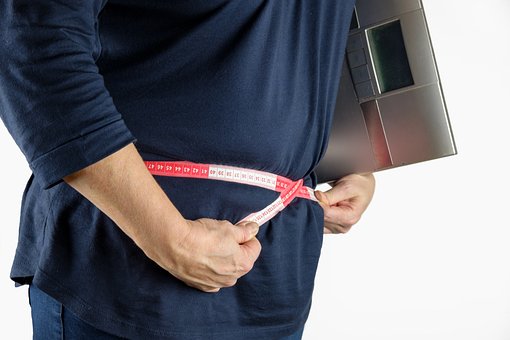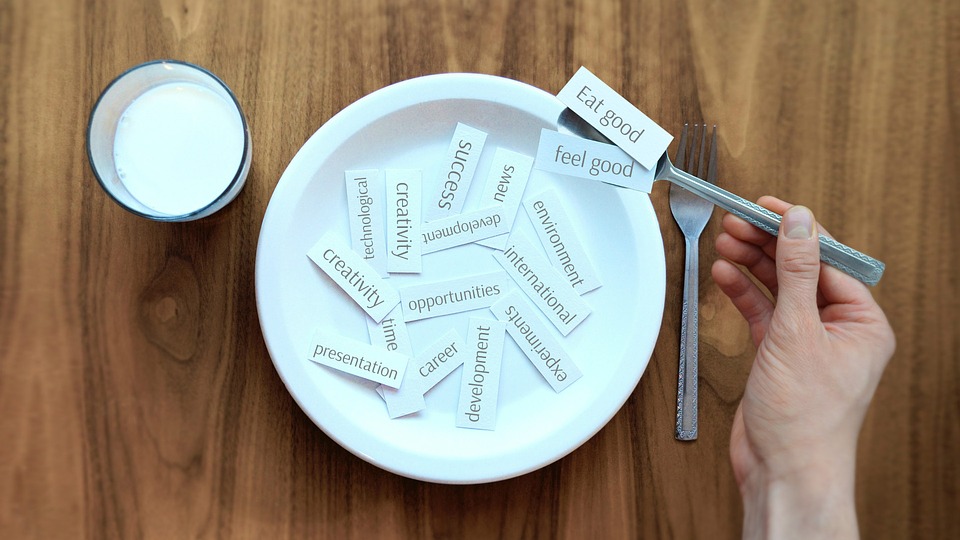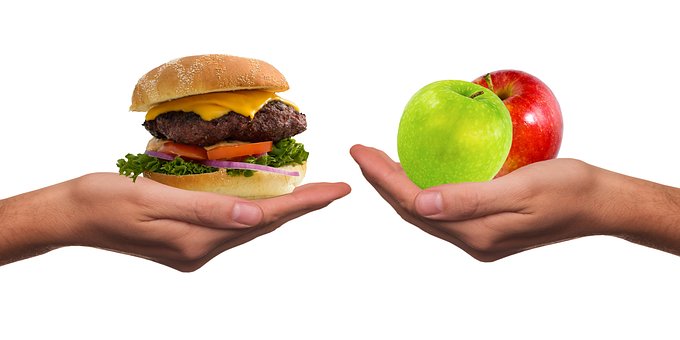
You recently concluded an event centered on physical appearance or ended a lengthy weight-loss regimen. Congrats! But, now what do you do? If you are typical, you may be tempted to eat all of the enjoyable food you have abstained from consuming for the past several months. It is obvious that this is not the optimal method.
Nobody wants to undo the progress they made in losing fat by having a few poor eating habits over the course of a few weeks. Unfortunately, that is the reality for many dieters. The fact of the matter is, losing fat is only half the task. Keeping it off is often the hardest part.
Is there a plausible way to keep the weight off in a safe and lasting manner? The good news is, there is! Reverse dieting is crucial in order to make sure the hard work and the progress gained through dieting is maintained.
What is Reverse Dieting?
What is the primary query that is occupying everyone’s minds? That being, what is a reverse diet? A nutrition protocol called reverse dieting is used to help people make healthier food decisions after a period of losing fat. Essentially, it is the diet after the diet.
In place of cutting calories over time to see results when following a regular diet, such as the metabolic confusion diet, with a reverse dieting regimen, you will be increasing your calorie intake. The objective is to correctly reintroduce fat and carb calories, limiting the storage of fat in the body while gradually gaining some weight back and aiding the restoration of a healthful and efficient metabolism.
This practice began in the bodybuilding industry to provide nutrition after a contest. One of the biggest problems facing bodybuilders and fitness competitors is that they often spend a long time optimizing their body, getting it in its prime condition, only to then gain all the weight back within a few weeks of stopping their restricted diet.
Once a lengthy period of losing fat has been completed, the body is ready to put on weight. Incrementally increasing the number of calories you consume has the potential to reduce the amount of fat you would gain while allowing you to eat more food. By taking this, you can bring your energy back, enhance your workout results, and gain muscle mass.
Does it Actually Work?
Reverse dieting tends to prove most effective for fitness competitors, models, and other individuals who put their body through extensive levels of slimness. Most individuals attempting to lose fat do not require a thorough approach to reverse dieting.
This is due to the fact that the amount of slimness attained from dietary habits should be maintainable. If you are only trying to lose a small amount of weight or are dieting for a short amount of time, it will not be a problem to return to your normal eating habits or even eat higher amounts.
It would be wise to be thoughtful and plan how to add calories back into your diet if you have been following a cutting workout and diet plan for an extended time period, which has resulted in a significant weight reduction. If one is on a diet for an extended period, their body becomes adjusted to the metabolic process and produces lower amounts of energy, which is referred to as adaptive thermogenesis.
The body will utilize metabolic adaptation as a way of preserving itself in order to resist any potential weight loss. The body does this by reducing energy expenditure.
Those who have gone through the process of substantial weight loss are aware that the further one gets along in their journey, the more difficult it becomes. Fat loss is a form of slow starvation. The body instinctively resists weight loss because in times past, having an emaciated figure did not mean that you would survive when resources were scarce.
Do not forget that, over the course of time, our ancestry was developing without having the availability of supermarkets and cooling systems. This is a result of the body’s genetic predisposition to store fat. The purpose of those reserves of fat is to supply energy in times when food cannot be obtained quickly. It’s a survival mechanism.
Studies indicate that the only way to undo the detrimental effects of long-term dieting is to put on some pounds. It is not enough to just increase the number of calories that you are consuming. Getting back to the inquiry, reverse dieting can be successful if it allows for an appropriate increase in weight.
Can You Lose Weight on a Reverse Diet?
When it first gained attention from the public, reverse dieting was misinterpreted as a way to eat more without putting on pounds and sometimes was even suggested as a means to slim down. It is clear why reverse dieting grew in popularity. Any eating plan that permits one to consume more food without increasing their weight will be extremely popular.
It is likely that if an offer appears to be too good to be true, it probably is not legitimate.
The aim of a reverse diet strategy is to restrict the amount of fat added as much as feasible by step by step rising calories in small increments to stop any noticeable weight gain. Hypothetically, you can add calories while staying lean.
The issue is that increasing calories slowly, typically by ~50 calories per interval, results in extending the diet, making it less effective. There is no justification for remaining in a shortfall once the weight loss phase is complete.
The main focus of a reverse dieting plan is not to promote further weight loss. The purpose of reverse dieting is to add a few pounds gradually over an extended period of time, with the purpose of limiting fat gain, and finally obtain a calorie level that is sustainable for maintenance. The goal of reverse dieting is to maintain a slim figure while consuming a greater quantity of food.
In order to be successful in reverse dieting, you should remove any reduced caloric intake right away. Despite this, occasionally it is observed that you will end up putting on fewer pounds than anticipated when attempting to increase your caloric intake. It is so for a few reasons.
When you include more calories in your diet, it is easier to stick to it. Let’s face it. Dieting is hard. As you continue your dieting and the pounds start to drop off, it becomes increasingly difficult. Frequently, individuals experience a stall in their weight-loss journey due to the need to be more rigorous with their nutrition plan. Frequently, those who have been dieting for an extended period of time may not be aware that they are no longer following the diet plan as strictly as they once were.
Eating snacks in addition to normal meals, not monitoring food or eating one or two meals that are not being recorded can be sufficient to impede a full week’s worth of progress in weight loss. Adhering to your exercise routine alone won’t be adequate to preserve or decrease your weight. Be sure to have your nutritional needs met.
In other words, although your finances look bleak on paper, you can avoid the deficit by not following your diet as strictly. When you increase your caloric intake during the reverse diet, it makes sticking with it much simpler. On paper, you have supposedly increased the amount of calories you consume daily by several hundred, but your calorie intake does not actually change much, thus the amount of weight gained is minimal.
You might put on less weight than you anticipate because of NEAT, which stands for non-exercise associated energy expenditure. The energy we use for activities other than sleeping, eating, or working out is what powers everything we do.
Benefits
There is little scientific evidence to validate the concept of reverse dieting, yet it has received much validation on the basis of people’s experiences and testimonies, with even dietitians and nutritionists lending their endorsement. Here are some possible advantages that you can gain from reverse dieting.
It Can Reset Your Metabolism
Tills states that reversing your diet may be a beneficial approach for revitalizing your metabolism after a period of eating at a low calorie level. Our physiology is obliged to go through certain alterations in metabolism as we stay in a state of calorie deficit for prolonged periods of time. Therefore, when we gradually increase our food intake to a level that constitutes our real energy requirements, it will result in increased energy, improved digestion, and the capability to burn more calories, the expert says.
It May Help Prevent Muscle Loss
Duff explains that during times when calorie intake is low and the individual has a relatively low body weight, muscle breakdown can occur. She states that cortisol levels rise, which is the hormone connected to stress, while testosterone levels decrease when someone is dieting. She always advises her clients to consume more protein and do organized resistance training when undertaking reverse dieting in order to counterbalance the consequences of reverse dieting since muscle protein is much more energetic than fat, which contributes to resting metabolic rate.
You’ll Feel Better—And More in Control
Are you curious about how to consume more food but don’t know how to go about it? Ending a diet can make you feel somewhat uneasy, particularly if it was accompanied by a considerable reduction in calories or nutrients. Reverse dieting can help you increase your caloric intake in an orderly, wholesome way. Holly Schiff, a psychologist from Jewish Family Services of Greenwich, adds that upping your caloric intake gradually can not only better your physical health, but also your mental health. Suppressing caloric intake can lead to feeling tired and grumpy, so eating more can help your energy levels and mood.
How to Reverse Diet
Want to try it yourself? These are some professional suggestions to assist you in making a reverse diet program.
1. Determine Your Current Calorie Intake
Tills suggests considering the direction in which your current calorie consumption is going before beginning a reverse diet. She usually suggests that her customers keep track of what they eat for around seven days. Afterwards, she examines the average of the calories and macronutrients, like carbs, protein, and fat, to make sure the intake is balanced.
This should assist you in calculating your initial calorie deficiency mean, which can aid you in settling your ultimate goal and calculating how quickly you can resume consuming calories. Typically, a person should take in an extra 300 to 500 calories when no longer on a deficit; still, if the deficit was considerable, between 500 to 1000 extra calories should be consumed.
2. Make a Flexible Plan for What You Are Going to Eat
Make a list of the foods you would typically eat at breakfast, lunch, dinner, and snack times while following your diet, and indicate when each meal should take place. This will aid you in creating a strategy that you can stick to and guarantee that you don’t eat too much or too little food.
3. Start Adding in Calories Slowly
It is suggested to gradually increase the caloric intake by 50 to 100 calories per week until regular intake is reached. For instance, the goal for the first week should be 1600 if you begin at 1550. She stresses the importance of going slow while increasing the calorie intake, warning that doing so too quickly can lead to quickly gaining back fat and weight.
4. Add an Extra Serving of Food Each Day
Myers suggests that to ensure you’re not eating less than usual due to sticking to your diet, you should add an additional portion to every day’s meals. She recommends increasing fruit intake by having a bit extra at breakfast, throwing some avocado into a dish, or creating a yogurt treat as a snack. Make a list of the additional meals you are having in the course of the week and specify where each one will be located on your eating schedule.
5. Have Meals Prepped and Ready to Go
Myers proposes sticking to a timeframe of 30 minutes to eat after the designated time on your nutrient plan. It can be less challenging if you have the meals already cooked and available to eat no matter where you are. “Things in life can get in the way of your plans, and it’s not uncommon to find yourself glancing at the clock and seeing that it’s already two in the afternoon and you haven’t even touched your lunch yet,” she explains. Put your all into being consistent, but have leniency with yourself on the days where it’s difficult to stick to your goal.
6. Establish an End Point
Once you attain your objective, you shouldn’t have to monitor your intake as frequently. It is beneficial to regularly monitor your food intake to make sure it is not falling too low or rising too high. In conclusion, you should use your dieting experience as a source of knowledge, but you should also increase your intake of calories and nutrients gradually in order to remain healthy rather than continuing to lose weight.
Myers suggests that a gradual process of increasing your caloric intake gives you a chance to consider the kind of diet you want ahead. Rather than having a rigid view when it comes to food, reverse dieting could offer you the chance to decide what future steps to take to better your health. In the process, she suggests looking into other calming activities like journaling, yoga, massage, and so forth to foster overall health.














